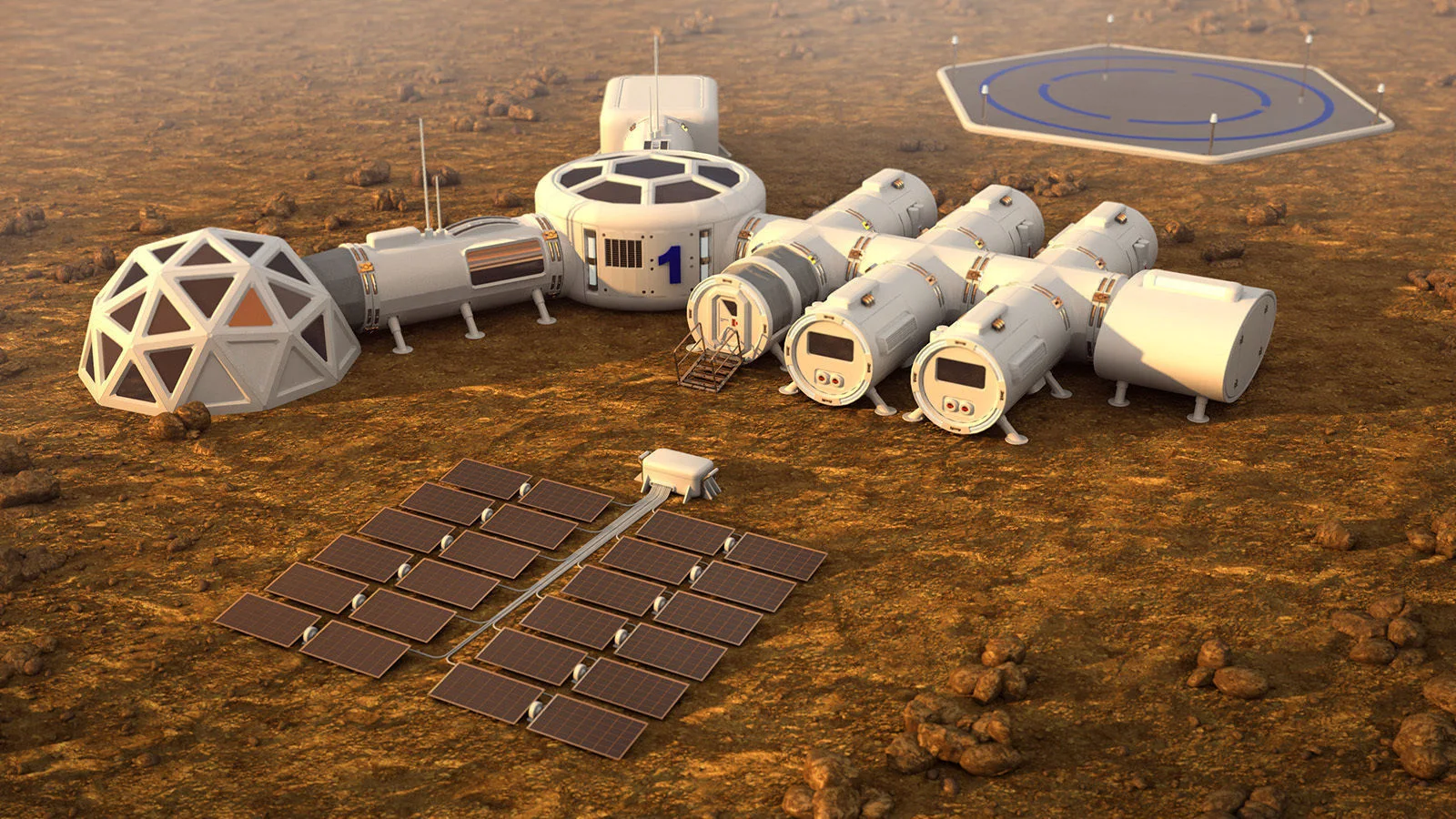A realistic 3D model of the colony on Mars. It includes several buildings, an administrative building, a storage room, hangars, a solar batt...
 |
| A realistic 3D model of the colony on Mars. It includes several buildings, an administrative building, a storage room, hangars, a solar battery, a landing area for ships. / Shutterstocks |
In this work, we present the result of a design synthesis exercise, a 10 kW microgrid solution, based on a pumping kite power system and photovoltaic solar modules to power the construction as well as the subsequent use of a Mars habitat. To buffer unavoidable energy fluctuations and balance seasonal and diurnal resource variations, the two energy systems are combined with a compressed gas storage system and lithium-sulfur batteries.
The airborne wind energy solution was selected because of its low weight-to-wing-surface-area ratio, compact packing volume and high capacity factor which enables it to endure strong dust storms in an airborne parking mode. The surface area of the membrane wing is 50 m2 and the mass of the entire system, including the kite control unit and ground station, is 290 kg.
The team developed and tested similar kites to harness wind power on Earth, however, these would be much larger, with a surface area of 530-540 square feet and the weight of the entire system, including the control unit and ground station, is around 640 pounds (approx. 290 kilograms). They estimate if coupled with solar panels, lithium batteries and compressed gas, the system could power five US households. The team expects the cost of the system, excluding transportation, would be about 8.95 million Euro, or roughly USD 10.87 million.
The research team’s methods may seem audacious, but it might be the right one. Because producing and storing renewable energy on Mars is equally challenging as shipping fossil fuel to our neighbouring planet would be prohibitive. Also, the red planet gets less than half the sunlight of Earth, making solar power ineffective and wind turbines and batteries are too heavy to be shipped, hence the idea to harness the wind energy during dust storms on Mars could be a possibility. Surface winds are faster on Mars than on Earth, about 10 to 20 miles an hour on average.
According to an open-source online journal arXiv, the research team in their proposal wrote that, ’generating renewable energy on Mars” is technologically challenging when compared to Earth. As the key energy sources such as solar and wind are weak due to low levels of ‘atmospheric pressure and solar irradiation.’
But using kites to harness wind energy is no sure thing, as a previous attempt by Alphabet, Google’s parent company shelved work on Makani, its experimental project to generate power using wind turbines attached to kites, The Verge reported. The report further cited that the project successfully developed a prototype model capable of generating 600 kilowatts in 2019, but that same year, Alphabets’ ‘Other Bets’ division, that includes Makani, incurred a loss of USD 4.8 billion

.webp)



